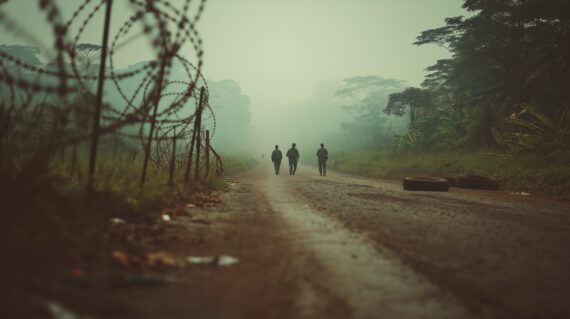The Current Situation:
Africa’s Sahel region stretches across the continent just south of the Sahara Desert, from Senegal in the west to Chad in central Africa. The region was always arid, but it is now undergoing desertification, its climate becoming increasingly like that of the Sahara Desert.
This exacerbates the threats to livelihoods and food security that most of the people in Sahelian countries confront daily, since these are among the poorest countries in the world.
U.N. humanitarian agencies have grouped five countries together into their first-ever regional hunger hotspot: Mali, Niger, Burkina Faso, Mauritania, and Chad. They classify this part of the Sahel region as “of particular concern” because urgent action is needed to avert extreme hunger or death, it has a sizeable population (at least half a million people) living with critical food insecurity, and life-threatening conditions are expected to affect an increasing number of people.
As long ago as December 2021, an estimated 343,000 people were already living on the verge of famine. By August 2022, the number of people in this group is expected to reach more than 1.1 million. Child malnutrition has surpassed the emergency threshold in many parts of the region; for example, in the conflict-affected areas of Burkina Faso and Niger, more than 15 percent of children are severely malnourished.
In Mauritania and northern Chad, the group expected to be in greatest need this year is pastoralists, who generally travel much of the year along with their herds of livestock. They are often located far away from support such as treatment for severely malnourished children, and their animals are vulnerable to climate change impacts such as drought.
In Niger, humanitarian officials are particularly concerned about faltering production of millet, the country’s staple grain. The most recent millet harvest, for example, was 38 percent below the five-year average.
The Humanitarian Response:
The World Food Programme (WFP) anticipates reaching 9.2 million people with lifesaving humanitarian aid in the three countries of Mali, Niger, and Burkina Faso alone. Among them are 2.2 million people who are internally displaced, meaning that they are still in their own countries but cannot produce food for themselves since they have lost access to their homes and land.
In 2021, relief agencies received about half of the funding for emergency response that they had requested. All five countries receive humanitarian support from WFP for food security and nutrition. Meeting the anticipated needs for 2022 will cost between $200 million and $300 million per country. As of May 2022, however, donor appeals for the countries of the region were on average about 10 percent funded.
The Causes:
Rising levels of armed conflict and deteriorating security leading to massive population displacement across Burkina Faso, Mali, and Niger
Climate change impacts, including erratic rainfall and signs of desertification such as prolonged drought and less arable land
Spiking prices for basic foods
Widespread extreme poverty
Bread for the World’s Connection to Hunger Hotspots:
Bread’s ongoing advocacy for robust humanitarian food and nutrition assistance is essential to an effective response to the hunger crisis in the Sahel. Bread for the World members are longtime faithful advocates for people in hunger emergencies and have already helped to win additional humanitarian funding for 2022. This is part of Bread’s efforts to persuade Congress to allocate funds that save lives, prevent irreparable harm from early childhood malnutrition, and ease suffering. Bread members also champion U.S. development assistance, which helps prevent hunger emergencies by enabling and equipping people to build resilient communities.



